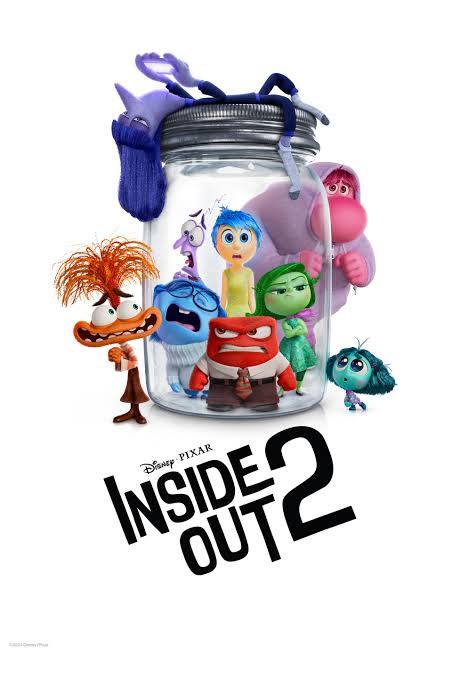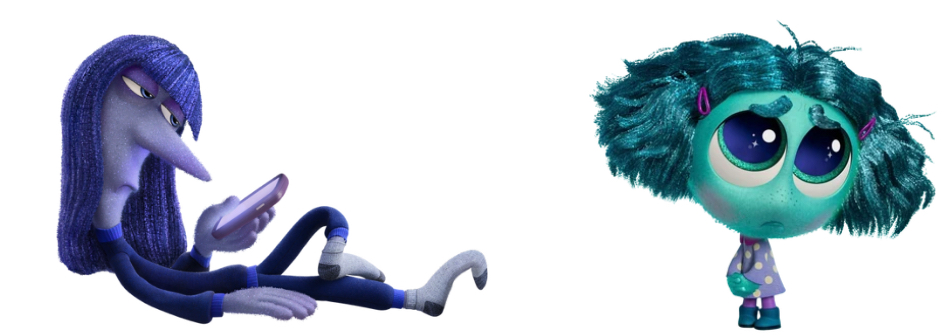When Pixar released Inside Out in 2015, audiences were captivated by its imaginative dive into the mind of an 11-year-old girl named Riley. The film quickly became one of the studio’s most beloved works, winning an Academy Award and cementing itself as a modern animated classic. Nearly a decade later, Pixar has returned to Riley’s inner world with Inside Out , released in June 2024. This time, Riley is a teenager navigating hockey camp, friendship dilemmas, and the storm of emotions that come with adolescence. The question facing audiences was simple: could Pixar capture lightning in a bottle again?

Growing Pains on Screen
Directed by Kelsey Mann, Inside Out 2 marks his debut as a Pixar feature director, stepping in after Pete Docter — the creative force behind the original — moved into an executive role at the studio. The voice cast brings back familiar favorites: Amy Poehler as the ever-optimistic Joy, Phyllis Smith as the melancholy but lovable Sadness, and Lewis Black as Anger. However, Bill Hader and Mindy Kaling did not return as Fear and Disgust, with Tony Hale and Liza Lapira taking over.
The biggest shake-up comes with Riley’s new emotions. As puberty hits, her control panel expands to include Anxiety (voiced by Maya Hawke), Envy (Ayo Edebiri), Embarrassment (Paul Walter Hauser), and Ennui (Adèle Exarchopoulos). These additions mirror the turbulence of teenage life and bring a fresh layer of humor and relatability.
Commercially, the film has been a massive success, grossing more than $1.6 billion worldwide and becoming Pixar’s highest-grossing movie since Incredibles 2 (2018). That alone signals a strong return for the studio, especially after the pandemic era when several Pixar releases (Soul, Turning Red, Luca) were sent straight to Disney+.
What Works: Humor, Heart, and Anxiety
Pixar has always thrived on balancing entertainment with emotional depth, and Inside Out 2 continues that tradition. Maya Hawke’s Anxiety is the standout addition, embodying the overthinking, panic-driven inner voice that so many adolescents (and adults) recognize. Anxiety’s frantic planning for Riley’s future — while well-intentioned — spirals into chaos, offering one of the film’s most memorable sequences.
Visually, the film expands on the original’s colorful imagination landscape. The new mind-world set pieces, such as the “Sar-Chasm” and “Secret Vault,” are clever and playful metaphors for teenage struggles. The humor lands well too, with Embarrassment’s oversized hoodie and Ennui’s sarcastic detachment adding plenty of comic relief.
Why did Inside Out 2 gross so much, most importantly is Inside Out 2 remains heartfelt. The film’s core message — that it’s okay to feel uncertain, anxious, or imperfect while growing up — resonates strongly with today’s audiences. In a cultural moment where youth mental health is a pressing issue, Pixar’s decision to spotlight anxiety and self-doubt feels timely and meaningful.
Where It Stumbles

Ennui Envy
That said, Inside Out 2 doesn’t entirely escape the pitfalls of sequels. While the original film felt fresh and groundbreaking, this installment sometimes struggles under the weight of expectation. With so many new emotions introduced, the pacing occasionally feels cluttered, and some characters — particularly Envy and Ennui — don’t receive as much depth as fans might have hoped.
Critics have also noted that the film plays it relatively safe. Where Turning Red (2022) embraced cultural specificity and bold storytelling, Inside Out 2 leans heavily on nostalgia and familiar Pixar beats. It’s a crowd-pleaser, but not necessarily a risk-taker.
Still, these shortcomings don’t sink the film. Instead, they highlight the challenge of balancing innovation with the comfort of a proven formula.
Beyond the Box Office
Beyond its financial triumph, Inside Out 2 is significant for what it says about Pixar’s current direction. After years of uncertainty, the studio has proven that audiences are eager to see its films in theaters again. Its success may influence Disney’s broader release strategy, moving away from the streaming-first approach that defined much of the early 2020s.
Beyond its , Inside Out 2 is significant for what it says about Pixar’s current direction. After years of uncertainty, the studio has proven that audiences are eager to see its films in theaters again. Its success may influence Disney’s broader release strategy, moving away from the streaming-first approach that defined much of the early 2020s.
Culturally, the film also sparks conversations about how children’s media can address mental health without oversimplifying it. By personifying Anxiety not as a villain but as an overzealous protector, the film models empathy and understanding — both for kids experiencing these feelings and for parents trying to support them.
Looking forward, the open-ended nature of Riley’s journey leaves space for a potential Inside Out 3, which could tackle college, adulthood, or even more complex psychological themes. Whether Pixar chooses to continue the series or not, this sequel has clearly struck a chord with audiences across generations.
Final Verdict
Inside Out 2 may not outshine the originality of its predecessor, but it succeeds in being both entertaining and deeply relatable. With sharp humor, dazzling animation, and a heartfelt exploration of adolescent emotions, Pixar proves once again that the most powerful stories come from within.
For families, teens, and Pixar fans alike, this is a sequel worth watching — a reminder that growing up is messy, but our emotions, even the uncomfortable on